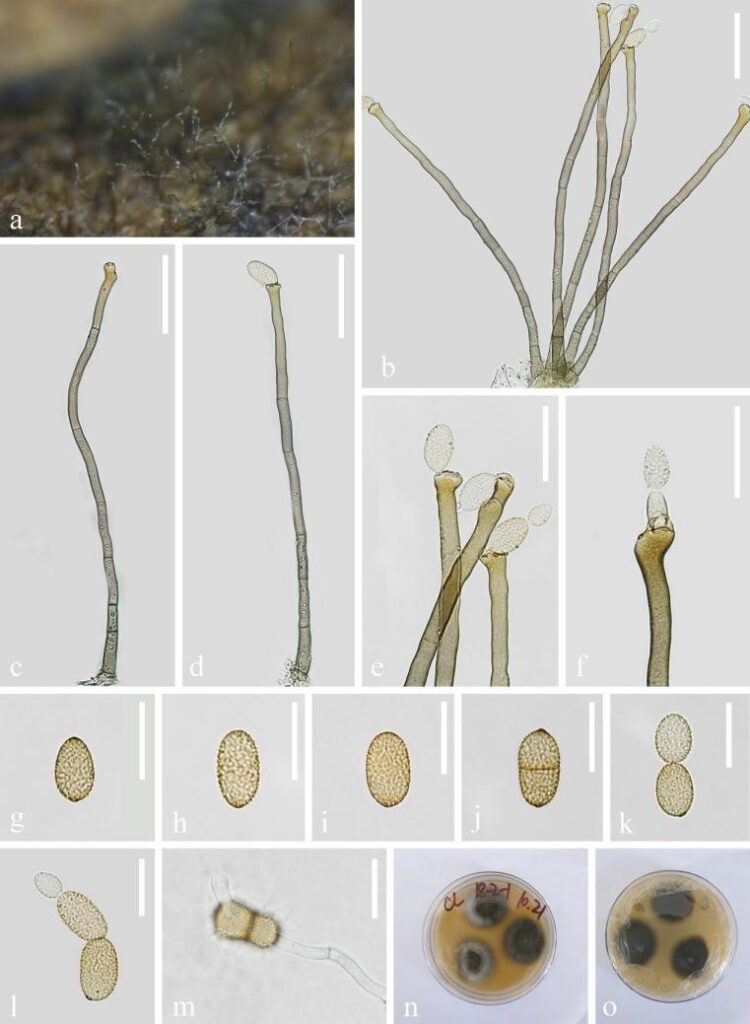Cladosporium paris H.W. Shen, Y.X. Xu, H.Y. Su & Z.L. Luo, sp. nov.
MycoBank number:MB; Index Fungorum number: IF; Facesoffungi number: FoF 10539 Fig. 3
Etymology: “paris” refers to the host genus, Paris.
Holotype: KUN-HKAS 121701
Parasitic on diseased leaves of Paris polyphylla. Asexual morph: hyphomycetous. Mycelium immersed and superficial, composed of septate, constricted at septa, unbranched, subhyaline, smooth hyphae,2–6 μm wide. Conidiophores macronematous, 209–285 × 5–8 μm ( = 246.9 × 6.5 μm, n=15), solitary or in small fascicles, erect to slightly flexuous, sometimes slightly geniculate, non-nodulose, sometimes subnodulose at the uppermost apex, unbranched, 0–6 septate, sometimes slightly constricted at septa, pale to olivaceous-brown, smooth or almost so. Conidiogenous cells cylindrical, sometimes geniculate-sinuous, proliferation sympodia with up to 5 conidiogenous loci, often crowded at the apex. Conidia 13–21 × 7–12 μm ( = 17 × 9.7 μm, n=30), solitary or catenate, usually in simple chains, broadly ellipsoid-ovoid, rather pale, pale olivaceous or olivaceous-brown, verruculose, ends usually broadly rounded. Sexual morph: Undetermined.
Culture characteristics: —Colonies on PDA attaining 40 mm diam after 14 d, radially folded, furrowed, margin irregularly undulate; reverse olivaceous grey.
Material examined: —CHINA, Yunnan Province, Dali, on diseased leaves of Paris polyphylla, 16 October 2020, Y.X. Xu, Y-27. (KUN-HKAS 121701, holotype), ex-type living culture CGMCC****=KUNCC 21-10713.

Fig. 3 Cladosporium paris (KUN-HKAS 121701, holotype). a Colonies on leave. b,c Conidiophores. d Conidiophore with conidium. e,f Conidiogenous cells with conidia. g-l Conidia. m Germinating conidium. n,o Culture on PDA from above and reverse. Scale bars: b-d = 50μm; e,f = 30μm; g-m = 20μm.
